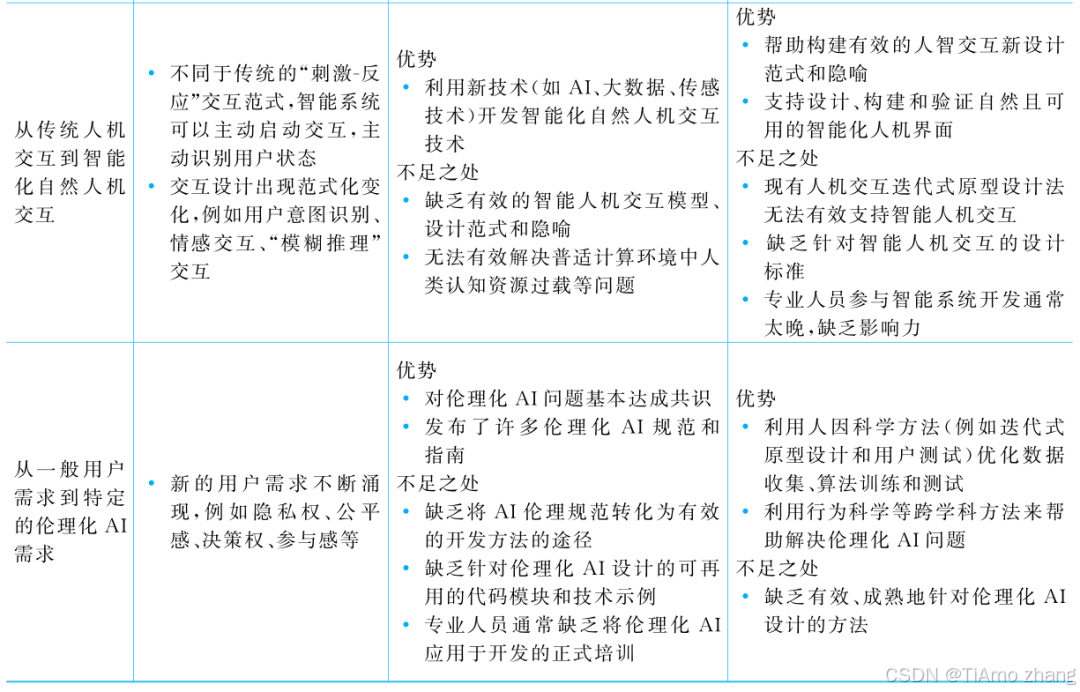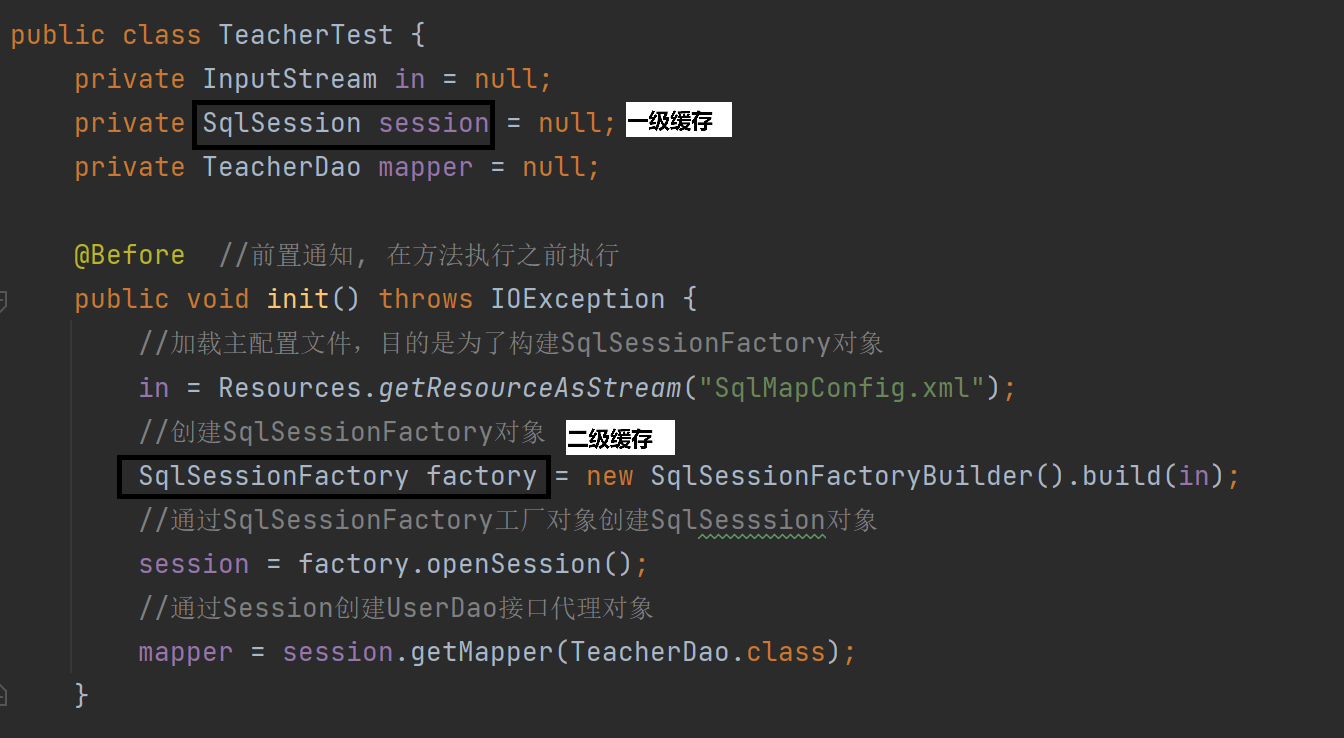CommonAPI学习笔记-2
一. 概述
这篇文章主要是想整理并且分析CommonAPI代码生成工具根据fidl和fdepl配置文件生成出来的代码的结构和作用。
二. fidl
用户根据业务需求在fidl文件中定义业务服务接口的结构以及自定义数据类型,然后使用core生成工具传入fidl文件生成该fidl的核心层Proxy和Stub以及配套的相关代码。
例如官方范例上的HelloWorld(https://github.com/COVESA/capicxx-core-tools/blob/master/CommonAPI-Examples/E01HelloWorld/fidl/E01HelloWorld.fidl),使用生成工具commonapi-core-generator-linux-x86_64输入该fidl文件可以生成HelloWorld.hpp,HelloWorldProxy.hpp,HelloWorldProxyBase.hpp,HelloWorldStub.hpp,HelloWorldStubDefault.hpp这5个代码文件。
2.1 interface
一个fidl文件对应一个CommonAPI的interface,对于C++来说,要定义一个interface,当然是使用一个抽象类来定义了,这个抽象类就是HelloWorld.hpp文件中的HelloWorld类了。
namespace v1 {
namespace commonapi {class HelloWorld {
public:virtual ~HelloWorld() { }static inline const char* getInterface(); // HelloWorld业务的CommonAPI接口名称static inline CommonAPI::Version getInterfaceVersion(); // HelloWorld业务的CommonAPI接口版本
};const char* HelloWorld::getInterface() {return ("commonapi.HelloWorld:v1_0");
}CommonAPI::Version HelloWorld::getInterfaceVersion() {return CommonAPI::Version(1, 0);
}} // namespace commonapi
} // namespace v1
当看到core工具生成的HelloWorld接口类,感觉有点奇怪,这个HelloWorld接口类只定义并且实现了两个关于接口信息的函数(接口名称和接口版本信息),而fidl中关于HelloWorld接口中的业务函数sayHello在生成的HelloWorld接口类中确没有
// HelloWorld.fidl
package commonapiinterface HelloWorld {version {major 1 minor 0}method sayHello { // 该函数没有生成在HelloWorld接口类中in {String name}out {String message}}
}
对于为什么生成的HelloWorld接口类中没有定义sayHello函数的原因,个人阅读完生成的代码后理解是,由于HelloWorld.fidl生成的核心层Proxy以及Stub代码在sayHello函数上的定义是不兼容的,而HelloWorld接口类又是核心层HelloWorldProxy和HelloWorldStub的父类,因此无法将sayHello函数的申明放入HelloWorld接口类中。
HelloWorld接口类中的getInterface和getInterfaceVersion函数是为了给CommonAPI核心层代码库创建核心层Proxy/Stub的时候使用的,代码如下:
// 代码文件/usr/local/include/CommonAPI-3.2/CommonAPI/Runtime.hpp
template<template<typename ...> class ProxyClass_, typename ... AttributeExtensions_>COMMONAPI_EXPORT std::shared_ptr<ProxyClass_<AttributeExtensions_...>>buildProxy(const std::string &_domain,const std::string &_instance,const ConnectionId_t &_connectionId = DEFAULT_CONNECTION_ID) {std::shared_ptr<Proxy> proxy= createProxy(_domain,//这里的ProxyClass就是HelloWorldProxy类,调用HelloWorldProxy的父类HelloWorld中的getInterfaceProxyClass_<AttributeExtensions_...>::getInterface(), _instance,_connectionId);if (proxy) {return std::make_shared<ProxyClass_<AttributeExtensions_...>>(proxy);}return nullptr;}
2.2 Proxy
在核心层生成了HelloWorldProxy.hpp和HelloWorldProxyBase.hpp两个代码文件,里面分别定义了HelloWorldProxy和HelloWorldProxyBase两个类。
其中,HelloWorldProxyBase是HelloWorldProxy的一个父类,其中包含了fidl中sayHello函数的相关定义(包括了同步调用和异步调用两种)
class HelloWorldProxyBase: virtual public CommonAPI::Proxy {
public:typedef std::function<void(const CommonAPI::CallStatus&, const std::string&)> SayHelloAsyncCallback; // 异步调用的回调通知接口virtual void sayHello(std::string _name, CommonAPI::CallStatus &_internalCallStatus, std::string &_message, const CommonAPI::CallInfo *_info = nullptr) = 0; // 同步调用接口virtual std::future<CommonAPI::CallStatus> sayHelloAsync(const std::string &_name, SayHelloAsyncCallback _callback = nullptr, const CommonAPI::CallInfo *_info = nullptr) = 0; // 异步调用接口virtual std::future<void> getCompletionFuture() = 0;
};
HelloWorldProxy类中实现了HelloWorldProxyBase父类中定义的sayHello相关接口:
template <typename ... _AttributeExtensions>
void HelloWorldProxy<_AttributeExtensions...>::sayHello(std::string _name, CommonAPI::CallStatus &_internalCallStatus, std::string &_message, const CommonAPI::CallInfo *_info) {delegate_->sayHello(_name, _internalCallStatus, _message, _info);
}
可以看到,HelloWorldProxy内部实现fidl中定义的接口时,还依赖了一个delegate_对象,这个delegatge_对象是HelloWorldProxyBase类型的共享指针
template <typename ... _AttributeExtensions>
class HelloWorldProxy: virtual public HelloWorld,virtual public HelloWorldProxyBase,virtual public _AttributeExtensions... {public:...private:std::shared_ptr< HelloWorldProxyBase> delegate_;
};
这里就有点不对了,前面说过HelloWorldProxy的一个父类就是HelloWorldProxyBase,难道HelloWorldProxy对象内部的这个delegate_共享指针是指向自己的?当然不是,在src-gen目录下查找还有没有其他类是HelloWorldProxy,结果看到HelloWorldProxyBase类也是HelloWorldSomeIPProxy类的父类,HelloWorldSomeIPProxy是通过commonapi-someip-generator-linux-x86_64工具生成的绑定层的Proxy类。
也就是说核心层的Proxy是依赖绑定层的Proxy的,绑定层的内部会产生依赖所绑定中间件的代码来实现fidl中定义的接口函数。
2.3 Stub
在核心层生成了HelloWorldStub.hpp,HelloWorldStubDefault.hpp这两个代码文件,其中包含HelloWorldStubAdapter,HelloWorldStubRemoteEvent, HelloWorldStub以及HelloWorldStubDefault这四个类,这四个类的关系如下:

首先是HelloWorldStubAdapter类,其继承于CommonAPI::StubAdapter(实现了CommonAPI地址提供接口getAddress)和HelloWorld(实现了接口信息提供方法getInterface和getInterfaceVersion)。
所谓CommonAPI地址,包含三个成员(domain, interface, instance),这三个成员都是字符串:
namespace CommonAPI {
class Address {
public:COMMONAPI_EXPORT Address();...private:std::string domain_; // 所在域std::string interface_; // 接口名称std::string instance_; // 实例名称friend COMMONAPI_EXPORT std::ostream &operator<<(std::ostream &_out, const Address &_address);
};
}
CommonAPI::StubAdapter中CommonAPI地址的来源是绑定层的StubAdapter(CommonAPI::SomeIP::StubAdapter)在初始化的时候赋值的
// Stub.hpp
namespace CommonAPI {class StubAdapter {public:virtual ~StubAdapter() {}inline const Address &getAddress() const { return address_; }protected:Address address_; // 在绑定层的StubAdapter中赋值};
}// StubAdapter.cpp
namespace CommonAPI {
namespace SomeIP {
class StubAdapter: virtual public CommonAPI::StubAdapter, public InterfaceHandler { // 继承自核心层的StubAdapter
...
void
StubAdapter::init(std::shared_ptr<StubAdapter> instance) {(void) instance;// AddressTranslator保存了绑定层地址和核心层地址的映射关系// 这个映射关系在绑定层StubAdapter的initializer函数中插入的AddressTranslator::get()->translate(someipAddress_, address_); // address_是CommonAPI::StubAdapter中的成员变量
}
...
}
}
其次是HelloWorldStubRemoteEvent类,这个类目前基本是空的,因为这是个和属性相关的类,如果你的fidl中没有定义属性成员,那么生成的StubRemoteEvent类可能就是空的,对照官网上https://github.com/COVESA/capicxx-core-tools/tree/master/CommonAPI-Examples/E02Attributes这个带属性的范例生成的代码可以看到,有属性的fidl生成的StubRemoteEvent类是定义了一些属性相关的接口的,例如:
class E02AttributesStubRemoteEvent
{
public:virtual ~E02AttributesStubRemoteEvent() { }/// Verification callback for remote set requests on the attribute xvirtual bool onRemoteSetXAttribute(const std::shared_ptr<CommonAPI::ClientId> _client, int32_t _value) = 0;/// Action callback for remote set requests on the attribute xvirtual void onRemoteXAttributeChanged() = 0;/// Verification callback for remote set requests on the attribute a1virtual bool onRemoteSetA1Attribute(const std::shared_ptr<CommonAPI::ClientId> _client, ::v1::commonapi::examples::CommonTypes::a1Struct _value) = 0;/// Action callback for remote set requests on the attribute a1virtual void onRemoteA1AttributeChanged() = 0;
};
也就是说,生成的这个StubRemoteEent类是个关于事件通知的接口类,是需要用户自己来实现内部接口来接收属性的变化通知。
接者是HelloWorldStub类,这也是个接口类,继承自CommonAPI::Stub,CommonAPI::Stub最重要的工作是和CommonAPI::StubHelper打交道
namespace CommonAPI {
template<typename StubAdapter_, typename StubRemoteEventHandler_>
class Stub: public virtual StubBase {
public:// 初始化StubAdaptervirtual StubRemoteEventHandler_* initStubAdapter(const std::shared_ptr<StubAdapter_> &_stubAdapter) = 0;// 返回StubAdapterinline const std::shared_ptr<StubAdapter_> getStubAdapter() const { return stubAdapter_.lock(); }protected:std::weak_ptr<StubAdapter_> stubAdapter_;
因此,HelloWorldStub类包含了初始化和返回StubAdapter的接口,此外还增加了fidl中sayHello接口的申明,也就是说HelloWorldStub接口类的实现类至少要实现initStubAdapter,getStubAdapter和sayHello三个接口。
最后就是HelloWorldStubDefault类,它就是实现上面HelloWorldStub接口类中三个接口的实现类,代码如下:
class COMMONAPI_EXPORT_CLASS_EXPLICIT HelloWorldStubDefault: public virtual HelloWorldStub {
public:COMMONAPI_EXPORT HelloWorldStubDefault(): remoteEventHandler_(this),interfaceVersion_(HelloWorld::getInterfaceVersion()) {}COMMONAPI_EXPORT const CommonAPI::Version& getInterfaceVersion(std::shared_ptr<CommonAPI::ClientId> _client) {(void)_client;return interfaceVersion_; // 返回接口版本}COMMONAPI_EXPORT HelloWorldStubRemoteEvent* initStubAdapter(const std::shared_ptr< HelloWorldStubAdapter> &_adapter) {CommonAPI::Stub<HelloWorldStubAdapter, HelloWorldStubRemoteEvent>::stubAdapter_ = _adapter;return &remoteEventHandler_;}COMMONAPI_EXPORT virtual void sayHello(const std::shared_ptr<CommonAPI::ClientId> _client, std::string _name, sayHelloReply_t _reply) {(void)_client;(void)_name;std::string message = "";_reply(message);}...
HelloWorldStubDefault类是一个默认的生成的Stub接口实现类,里面的函数实现大多数是无用的,用户需要在HelloWorldStubDefault这个生成的默认Stub实现类上再做一次实现(继承并且实现),例如代码实例中的HelloWorldStubImpl类那样。
三. fdepl
fdepl文件生成绑定层的代码,会生成HelloWorldSomeIPProxy,HelloWorldSomeIPStubAdapterInternal,HelloWorldSomeIPStubAdapter这几个绑定层的类。
3.1 Proxy
HelloWorldSomeIPProxy类是绑定层生成的Proxy类,其构造时需要传入绑定层地址(CommonAPI::SomeIP::Address),CommonAPI::SomeIP::Address包含SomeIP服务实例的信息:
namespace CommonAPI {
namespace SomeIP {class COMMONAPI_EXPORT Address {...
private:service_id_t service_; // 服务IDinstance_id_t instance_; // 实例IDmajor_version_t major_version_; // Max版本号minor_version_t minor_version_; // Min版本号
}
}
}
先来看下创建HelloWorldSomeIPProxy的过程,首先,用户需要在自己的应用程序中创建核心层的Proxy(HelloWorldProxy)
// HelloWorldClient.cpp
int main() {...// CommonAPI::Address// {// domainid = "local"// interface = HelloWorld::getInterface = "commonapi.HelloWorld:v1_0"// instance = "test"// }std::shared_ptr<HelloWorldProxy<>> myProxy = runtime->buildProxy<HelloWorldProxy>("local", "test");...
}
可以看到,创建核心层HelloWorldProxy的时候,对应的CommonAPI::Address地址已经提供出来了,然后runtime在创建的时候,会在调用核心层的工厂类(CommonAPI::SomeIP::Factory)的createProxy创建绑定层的HelloWorldSomeIPProxy对象,这个时候就需要从AddressTranslator中获取绑定层地址(SomeipIP的服务和实例信息)
// Factory.cppstd::shared_ptr<CommonAPI::Proxy>
Factory::createProxy(const std::string &_domain,const std::string &_interface, const std::string &_instance,const ConnectionId_t &_connectionId) {auto proxyCreateFunctionsIterator= proxyCreateFunctions_.lower_bound(_interface);// 查找是否为该interface注册过SomeIP绑定层的Proxy的创建函数if (proxyCreateFunctionsIterator!= proxyCreateFunctions_.end()) { // 找到该CommonAPI interface注册的SomeIP绑定层Proxy创建函数...CommonAPI::Address address(_domain, itsInterface, _instance);Address someipAddress;// 在AddressTranslator中查找CommonAPI地址对应的SomeIP地址if (AddressTranslator::get()->translate(address, someipAddress)) {std::shared_ptr<Connection> itsConnection= getConnection(_connectionId);if (itsConnection) {// 使用注册的Proxy创建函数createHelloWorldSomeIPProxy创建HelloWorldSomeIPProxy// 传入的CommonAPI::SomeIP::Address为{0x1234, 0x1, 1, 0}std::shared_ptr<Proxy> proxy= proxyCreateFunctionsIterator->second(someipAddress, itsConnection);if (proxy && proxy->init())return proxy;}}}COMMONAPI_ERROR("Creating proxy for \"", _domain, ":", _interface, ":",_instance, "\" failed!");return nullptr;
} AddressTranslator中CommonAPI地址和SomeIP绑定层地址的对应关系在生成的绑定层HelloWorldSomeIPProxy.cpp中插入的:
// HelloWorldSomeIPProxy.cpp
void initializeHelloWorldSomeIPProxy() {// 插入地址对应关系CommonAPI::SomeIP::AddressTranslator::get()->insert("local:commonapi.HelloWorld:v1_0:test", // CommonAPI Address0x1234, 0x1, 1, 0); // CommonAPI::SomeIP Address// 注册绑定层SomeIP创建函数CommonAPI::SomeIP::Factory::get()->registerProxyCreateMethod("commonapi.HelloWorld:v1_0", // CommonAPI interface&createHelloWorldSomeIPProxy); // SomeIP Proxy create function
}std::shared_ptr<CommonAPI::SomeIP::Proxy> createHelloWorldSomeIPProxy(const CommonAPI::SomeIP::Address &_address,const std::shared_ptr<CommonAPI::SomeIP::ProxyConnection> &_connection) {return std::make_shared< HelloWorldSomeIPProxy>(_address, _connection);
}
然后,生成的绑定层HelloWorldSomeIPProxy也是需要实现fidl中定义的sayHello接口的,其实现主要是依赖Deployment类来包装输入的参数,然后通过ProxyHelper类来完成参数的序列化和中间件通信接口的调用(ProxyHelper::callMethod):
void HelloWorldSomeIPProxy::sayHello(std::string _name, CommonAPI::CallStatus &_internalCallStatus, std::string &_message, const CommonAPI::CallInfo *_info) {CommonAPI::Deployable< std::string, CommonAPI::SomeIP::StringDeployment> deploy_name(_name, static_cast< CommonAPI::SomeIP::StringDeployment* >(nullptr)); // 输入参数CommonAPI::Deployable< std::string, CommonAPI::SomeIP::StringDeployment> deploy_message(static_cast< CommonAPI::SomeIP::StringDeployment* >(nullptr)); // 返回参数// 依赖ProxyHelper类发起someip的Method请求(REQUEST-RESPONSE)CommonAPI::SomeIP::ProxyHelper<...>::callMethodWithReply( // ProxyHelper类是个静态类,内部都是静态方法,不保存成员*this, // 主要是提供HelloWorldSomeIPProxy内部的Connection指针CommonAPI::SomeIP::method_id_t(0x7b),false,false,(_info ? _info : &CommonAPI::SomeIP::defaultCallInfo),deploy_name,_internalCallStatus,deploy_message);_message = deploy_message.getValue();
}
而ProxyHelper的callMethod函数则依赖Connetion类来完成中间件接口的调用。
template <typename Proxy_ = Proxy>
static void callMethod(...) {if (_proxy.isAvailable()) { // 对端service为可用状态// 首先序列化参数OutputStream outputStream(_methodCall, _isLittleEndian);const bool success = SerializableArguments<InArgs_...>::serialize(outputStream, _inArgs...);...// 通过Connection指针调用到vsomeip中间件接口bool success = _proxy.getConnection()->sendMessage(_methodCall); ...} else {...}
}
3.2 Stub
HelloWorldSomeIPStubAdapterInternal是HelloWorldSomeIPStubAdapter的父类,此外,HelloWorldSomeIPStubAdapterInternal类也是绑定层对于核心层HelloWorldStubAdapter接口类的实现。
总体来说,StubAdapter类是在Stub和中间件之间做适配功能的类,并且实现了核心层的StubAdapter接口类中定义的接口。
先看下HelloWorldSomeIPStubAdapterInternal类,HelloWorldSomeIPStubAdapterInternal继承自核心层生成的HelloWorldStubAdapter接口和CommonAPI::SomeIP::StubAdapterHelper类。
HelloWorldSomeIPStubAdapterInternal类有获取内部属性的成员,其中包括Version信息的属性的getHelloWorldInterfaceVersionStubDispatcher成员,如果fidl中定义了业务的属性,则还会包含该业务属性的StubDispatcher成员,例如https://github.com/COVESA/capicxx-core-tools/tree/master/CommonAPI-Examples/E02Attributes 中fdepl生成的E02AttributesSomeIPStubAdapter.hpp文件中,E02AttributesSomeIPStubAdapterInternal类就有getXAttributeStubDispatcher,getA1AttributeStubDispatcher和getE02AttributesInterfaceVersionStubDispatcher,其中getXAttributeStubDispatcher对应fidl中定义的属性x,getA1AttributeStubDispatcher对应fidl中定义的属性a1。
SomeIPStubAdapterInternal类内部的StubDispatcher成员都是GetAttributeStubDispatcher类型的,实现了StubDispatcher接口,查看GetAttributeStubDispatcher类的实现可以看到内部成员函数dispatchMessage,这个函数就是通过Connection类调用SomeIP中间件将属性值通过消息的方式发送给客户端:
template <typename StubClass_, typename AttributeType_, typename AttributeDepl_ = EmptyDeployment>
class GetAttributeStubDispatcher: public StubDispatcher<StubClass_> {
public:...bool dispatchMessage(const Message &message, const std::shared_ptr<StubClass_> &stub,RemoteEventHandlerType* _remoteEventHandler,std::shared_ptr<ProxyConnection> _connection) {...return sendAttributeValueReply(message, stub, _connection);}protected: inline bool sendAttributeValueReply(const Message &message, const std::shared_ptr<StubClass_>& stub,std::shared_ptr<ProxyConnection> _connection) {...return _connection->sendMessage(reply);}...}
当服务端进程收到客户端发送的对属性访问的SOMEIP method消息触发该接口的调用,调用栈如下:
Connection::handleStubReceive // 从中间件收到client发送的消息// 处理消息(根据消息中的serviceID, instanceID找到对应的CommonAPI::SomeIP::StubAdapter// 例如E02AttributesSomeIPStubAdapterInternal,HelloWorldSomeIPStubAdapterInternal StubManager::handleMessage StubAdapterHelper::onInterfaceMessage // StubAdapterHelper也是E02AttributesSomeIPStubAdapterInternal的父类StubAdapterHelper::findDispatcherAndHandleStubDispatcher::dispatchMessage // 内部调用Stub对应的get属性值的方法获取当前属性值
当服务端进程将属性的值通过SOMEIP消息回复给客户端的时候,首先是需要知道当前服务instance中该属性的值对不对,fidl文件生成的核心层Stub中提供这个属性的值的获取方法:
// src-gen/v1/commonapi/examples/E02AttributesStubDefault.hpp
COMMONAPI_EXPORT virtual const int32_t &getXAttribute() {return xAttributeValue_;
}
也就是说如果有Stub对象,就可以调用其getXAttribute方法获取其x属性的当前值,然后在E02AttributesSomeIPStubAdapterInternal的构造函数中可以看到,HelloWorldSomeIPStubAdapterInternal构造函数中创建x属性对应的getXAttributeStubDispatcher对象时提供getXAttribute方法:
E02AttributesSomeIPStubAdapterInternal(...getXAttributeStubDispatcher(&::v1::commonapi::examples::E02AttributesStub::lockXAttribute,&::v1::commonapi::examples::E02AttributesStub::getXAttribute, // 注册到内部getStubFunctor_成员中false,_stub->hasElement(0)),22...
}
getXAttributeStubDispatcher是GetAttributeStubDispatcher类型的,其dispatchMessage方法中可以看到对get属性值方法的调用:
class GetAttributeStubDispatcher: public StubDispatcher<StubClass_> {
public:...bool dispatchMessage(const Message &message, const std::shared_ptr<StubClass_> &stub,...return sendAttributeValueReply(message, stub, _connection);}
protected:inline bool sendAttributeValueReply(const Message &message, const std::shared_ptr<StubClass_>& stub,std::shared_ptr<ProxyConnection> _connection) {Message reply = message.createResponseMessage();OutputStream outputStream(reply, isLittleEndian_);...// 获取属性值auto deployable = CommonAPI::Deployable<AttributeType_, AttributeDepl_>((stub.get()->*getStubFunctor_)(clientId), depl_);outputStream << deployable; // 写入消息outputStream.flush();return _connection->sendMessage(reply); // 发送属性值get-method消息的回复消息}
}
HelloWorldSomeIPStubAdapter继承了HelloWorldSomeIPStubAdapterInternal,也就具备了通过绑定层调用SomeIP中间件进行通信的功能,在此基础上,主要增加了一个功能,就是在构造函数中增加了SomeIP地址和Connection对象的传入,有了这两个对象,HelloWorldSomeIPStubAdapterInternal的SomeIP通信功能才能真正工作起来。
public:HelloWorldSomeIPStubAdapter(const CommonAPI::SomeIP::Address &_address,const std::shared_ptr<CommonAPI::SomeIP::ProxyConnection> &_connection,const std::shared_ptr<CommonAPI::StubBase> &_stub): CommonAPI::SomeIP::StubAdapter(_address, _connection),HelloWorldSomeIPStubAdapterInternal<_Stub, _Stubs...>(_address, _connection, _stub) {}
那么这个构造函数什么时候调用的呢?是CommonAPI::SomeIP::Factory调用的,之前在核心层说过,生成的绑定层Stub代码会将HelloWorldSomeIPStubAdapter的创建函数和对应的CommonAPI::Address注册给Factory:
void initializeHelloWorldSomeIPStubAdapter() {CommonAPI::SomeIP::AddressTranslator::get()->insert("local:commonapi.HelloWorld:v1_0:test",0x1234, 0x1, 1, 0);CommonAPI::SomeIP::Factory::get()->registerStubAdapterCreateMethod( // 注册HelloWorldSomeIPStubAdapter的创建函数"commonapi.HelloWorld:v1_0",&createHelloWorldSomeIPStubAdapter);
}
当我们在服务端代码中注册我们的HelloWorldStubImpl时,通过核心层调用到绑定层的SomeIP::Factory进行HelloWorldSomeIPStubAdapter对象的创建:
int main() {std::shared_ptr<CommonAPI::Runtime> runtime = CommonAPI::Runtime::get();std::shared_ptr<HelloWorldStubImpl> myService =std::make_shared<HelloWorldStubImpl>();runtime->registerService("local", "test", myService); // 这一步会调用到SomeIP::Factory创建HelloWorldSomeIPStubAdapter...
}
相关文章:

CommonAPI学习笔记-2
一. 概述 这篇文章主要是想整理并且分析CommonAPI代码生成工具根据fidl和fdepl配置文件生成出来的代码的结构和作用。 二. fidl 用户根据业务需求在fidl文件中定义业务服务接口的结构以及自定义数据类型,然后使用core生成工具传入fidl文件生成该fidl的核心…...

ISP代理与住宅代理的区别
代理充当用户和互联网之间的中介,在增强安全性、隐私和可访问性方面提供多种功能。在众多代理类型中,ISP和住宅代理脱颖而出,各自拥有不同的功能和应用程序。 一、ISP代理 ISP代理,俗称Internet服务提供商代理,通过其…...

[25] cuda 应用之 nppi 实现图像色彩调整
[25] cuda 应用之 nppi 实现图像色彩调整 在 NPPI(NVIDIA Performance Primitives)中,图像色彩调整通常包括以下几种操作: 亮度调整:增加或减少图像的亮度。对比度调整:增强或减弱图像的对比度。饱和度调整:增强或减弱图像的颜色饱和度。色调调整:改变图像的色调(通常…...

Java 大视界 -- Java 大数据在智慧文旅中的应用与体验优化(74)
💖亲爱的朋友们,热烈欢迎来到 青云交的博客!能与诸位在此相逢,我倍感荣幸。在这飞速更迭的时代,我们都渴望一方心灵净土,而 我的博客 正是这样温暖的所在。这里为你呈上趣味与实用兼具的知识,也…...

PyTorch快速入门
Anaconda Anaconda 是一款面向科学计算的开源 Python 发行版本,它集成了众多科学计算所需的库、工具和环境管理系统,旨在简化包管理和部署,提升开发与研究效率。 核心组件: Conda:这是 Anaconda 自带的包和环境管理…...

100.7 AI量化面试题:如何利用新闻文本数据构建交易信号?
目录 0. 承前1. 解题思路1.1 数据处理维度1.2 分析模型维度1.3 信号构建维度 2. 新闻数据获取与预处理2.1 数据获取接口2.2 文本预处理 3. 情感分析与事件抽取3.1 情感分析模型3.2 事件抽取 4. 信号生成与优化4.1 信号构建4.2 信号优化 5. 策略实现与回测5.1 策略实现 6. 回答话…...

CF 465B.Inbox (100500)(Java实现)
题目分析 计算读取所有未读邮件所需的步数,其中1代表未读,0代表已读 思路分析 遍历邮件,如果当前是未读,那么所需步数1,如果下一封也是未读,不用管(遍历后会直接1),如果下一封是已读࿰…...

微信小程序获取openid和其他接口同时并发请求如何保证先获取到openid
在微信小程序中,如果你需要并发请求获取 openid 和其他接口的数据,并且希望确保先获取到 openid 之后再进行后续操作,可以考虑以下几种方法: 方法一:使用 Promise 链 1, 先请求 openid:使用 Promise 来请求 openid。 2, 在获取到 openid 后再请求其他接口。 function g…...

实现动态卡通笑脸的着色器实现
大家好!我是 [数擎 AI],一位热爱探索新技术的前端开发者,在这里分享前端和 Web3D、AI 技术的干货与实战经验。如果你对技术有热情,欢迎关注我的文章,我们一起成长、进步! 开发领域:前端开发 | A…...

DeepSeek R1 模型解读与微调
DeepSeek R1 模型是 DeepSeek 团队推出的一款重要的大语言模型,旨在通过强化学习提升大型语言模型的推理能力。 模型架构 DeepSeek-R1-Zero DeepSeek-R1-Zero 是 DeepSeek 团队推出的第一代推理模型,完全依靠强化学习(RL)训练&…...

YOLOv11实时目标检测 | 摄像头视频图片文件检测
在上篇文章中YOLO11环境部署 || 从检测到训练https://blog.csdn.net/2301_79442295/article/details/145414103#comments_36164492,我们详细探讨了YOLO11的部署以及推理训练,但是评论区的观众老爷就说了:“博主博主,你这个只能推理…...

Node.js学习指南
一、模块化规范 nodejs使用的模块化规范 叫做 common.js 规范: 每一个模块都有独立的作用域 代码在各自模块中执行 不会造成全局污染 每一个模块都是一个独立的文件(module对象) 模块可以被多次加载(module.exports 属性) 但是仅…...

2.5学习总结
今天看了二叉树,看的一脸懵,写了两道题 P4913:二叉树深度 #include <stdio.h> #include <stdlib.h> struct hly {int left;int right; }tree[1000005]; int hulingyun(int x) {if(x0)return 0;return 1max(hulingyun(tree[x].le…...

java进阶文章链接
java 泛型:java 泛型详解-绝对是对泛型方法讲解最详细的,没有之一 Java 泛型,你了解类型擦除吗? java 注解:深入理解Java注解类型 秒懂,Java 注解 (Annotation)你可以这样学 jav…...

vue2+vue3 HMCXY基础入门
vue2vue3 HMCXY基础入门 一、Vue2.x技术精讲1.Vue快速上手(1)Vue概念(2)创建实例(3)插值表达式(4)响应式特性(5)开发者工具 2.Vue指令二、Vue3.x技术精讲 一、…...

一次线程数超限导致的hive写入hbase作业失败分析
1.集群配置 操作系统:SuSe操作系统 集群节点:100台相同配置的服务器 单台:核心112Core,内存396G 2.问题现象 现象1:跑单个入库任务报错,批量提交任务后出现OOM异常 执行12个hivesql,将数据写入hbase.hbase入库有近一半的任务报错。 每次报错的任务不是同一个,hivesql…...

ip属地是手机号还是手机位置?一文理清
在数字化和网络化的今天,IP属地这一概念逐渐成为了人们关注的焦点。特别是在社交媒体和在线平台上,IP属地的显示往往让人联想到用户的地理位置。然而,关于IP属地到底与手机号还是手机位置有关,却存在着不少误解和混淆。本文将深入…...

查看设备uuid
在大多数操作系统中,可以通过不同的方式来查看设备的 UUID(Universally Unique Identifier)。以下是一些常见的方法: 在Linux系统中,可以使用命令行工具blkid或lsblk来查看设备的 UUID。例如,执行以下命令…...
)
C_C++输入输出(下)
C_C输入输出(下) 用两次循环的问题: 1.一次循环决定打印几行,一次循环决定打印几项 cin是>> cout是<< 字典序是根据字符在字母表中的顺序来比较和排列字符串的(字典序的大小就是字符串的大小)…...

All in one 的 AI tool Chain “Halomate”
这不算广告啊,就是真好用,虽然是我哥们儿的产品 比如你定了个gpt的plus 订阅,你发现好像有挺多功能 1- chat,这个自不必说,必须的功能 2- 高级语音 现在变成学英语的了,实时视频也就是我过年给姑婶介绍是…...

macOS多出来了:Google云端硬盘、YouTube、表格、幻灯片、Gmail、Google文档等应用
文章目录 问题现象问题原因解决办法 问题现象 macOS启动台(Launchpad)多出来了:Google云端硬盘、YouTube、表格、幻灯片、Gmail、Google文档等应用。 问题原因 很明显,都是Google家的办公全家桶。这些应用并不是通过独立安装的…...

将对透视变换后的图像使用Otsu进行阈值化,来分离黑色和白色像素。这句话中的Otsu是什么意思?
Otsu 是一种自动阈值化方法,用于将图像分割为前景和背景。它通过最小化图像的类内方差或等价地最大化类间方差来选择最佳阈值。这种方法特别适用于图像的二值化处理,能够自动确定一个阈值,将图像中的像素分为黑色和白色两类。 Otsu 方法的原…...

SpringCloudGateway 自定义局部过滤器
场景: 将所有请求转化为同一路径请求(方便穿网配置)在请求头内标识原来路径,然后在将请求分发给不同服务 AllToOneGatewayFilterFactory import lombok.Getter; import lombok.Setter; import lombok.extern.slf4j.Slf4j; impor…...

企业如何增强终端安全?
在数字化转型加速的今天,企业的业务运行越来越依赖于终端设备。从员工的笔记本电脑、智能手机,到工厂里的物联网设备、智能传感器,这些终端构成了企业与外部世界连接的 “神经末梢”。然而,随着远程办公的常态化和设备接入的爆炸式…...

MySQL账号权限管理指南:安全创建账户与精细授权技巧
在MySQL数据库管理中,合理创建用户账号并分配精确权限是保障数据安全的核心环节。直接使用root账号进行所有操作不仅危险且难以审计操作行为。今天我们来全面解析MySQL账号创建与权限分配的专业方法。 一、为何需要创建独立账号? 最小权限原则…...

人机融合智能 | “人智交互”跨学科新领域
本文系统地提出基于“以人为中心AI(HCAI)”理念的人-人工智能交互(人智交互)这一跨学科新领域及框架,定义人智交互领域的理念、基本理论和关键问题、方法、开发流程和参与团队等,阐述提出人智交互新领域的意义。然后,提出人智交互研究的三种新范式取向以及它们的意义。最后,总结…...

MyBatis中关于缓存的理解
MyBatis缓存 MyBatis系统当中默认定义两级缓存:一级缓存、二级缓存 默认情况下,只有一级缓存开启(sqlSession级别的缓存)二级缓存需要手动开启配置,需要局域namespace级别的缓存 一级缓存(本地缓存&#…...

LCTF液晶可调谐滤波器在多光谱相机捕捉无人机目标检测中的作用
中达瑞和自2005年成立以来,一直在光谱成像领域深度钻研和发展,始终致力于研发高性能、高可靠性的光谱成像相机,为科研院校提供更优的产品和服务。在《低空背景下无人机目标的光谱特征研究及目标检测应用》这篇论文中提到中达瑞和 LCTF 作为多…...

[特殊字符] 手撸 Redis 互斥锁那些坑
📖 手撸 Redis 互斥锁那些坑 最近搞业务遇到高并发下同一个 key 的互斥操作,想实现分布式环境下的互斥锁。于是私下顺手手撸了个基于 Redis 的简单互斥锁,也顺便跟 Redisson 的 RLock 机制对比了下,记录一波,别踩我踩过…...

麒麟系统使用-进行.NET开发
文章目录 前言一、搭建dotnet环境1.获取相关资源2.配置dotnet 二、使用dotnet三、其他说明总结 前言 麒麟系统的内核是基于linux的,如果需要进行.NET开发,则需要安装特定的应用。由于NET Framework 是仅适用于 Windows 版本的 .NET,所以要进…...
